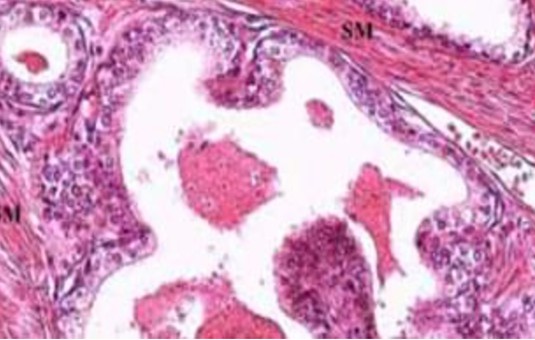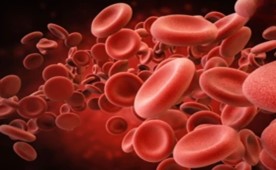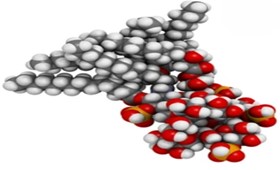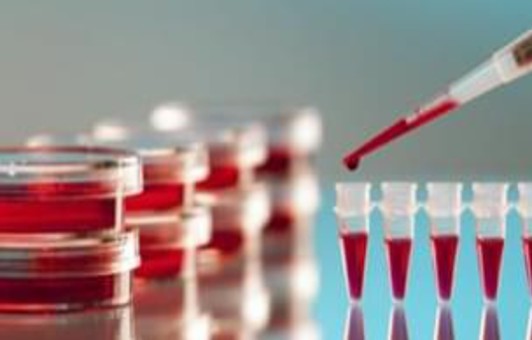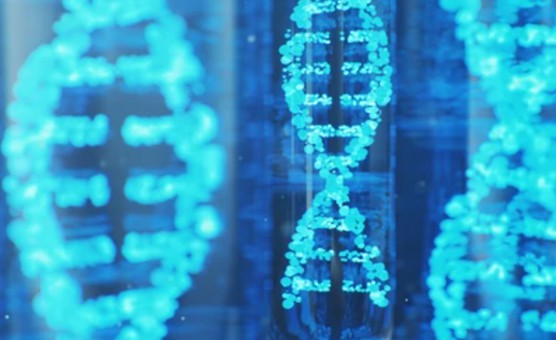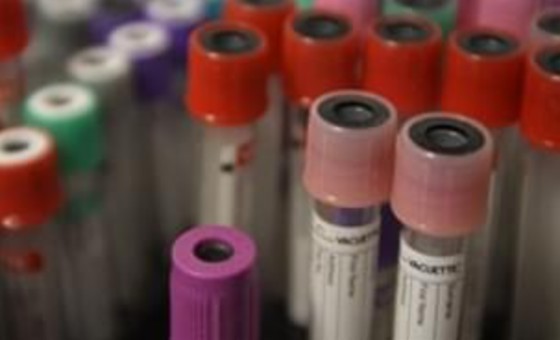Biospecimen Storage Protocol
GUIDELINE
- Depending on the intended laboratory analyses, and other considerations, specimens and their aliquots may be stored under different suitable conditions.
- Despite temperature, other storage conditions that are optimal for the preservation of specimen stability should be considered, such as endogenous hormones and others.
METHODS
- Slides, tissue blocks. Room temperature, about 18°C to 20°C, is recommended for preservation.
- Processing fresh specimens. Refrigerator, about 0°C to 4°C, is recommended for preservation.
- Short-term DNA stability. Freezer, about -0.5°C to -27°C, is recommended for preservation.
- DNA stability. Freezer, about -27°C to -40°C, is recommended for preservation.
- DNA / RNA stability. Freezer, about -40°C to -80°C, is recommended for preservation.
- Urine, blood, blood fractions (plasma, serum, etc.). Freezer, about -80°C to -130°C, is recommended for preservation.
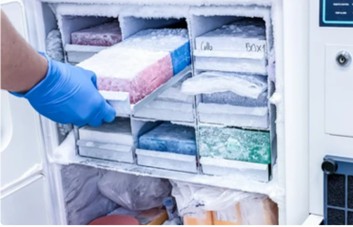
- Storage of tissues, preservation of cellular viability. Liquid nitrogen vapor, about -130°C to -150°C, is recommended for preservation.
- Storage of living cells. Liquid nitrogen liquid phase, about -196°C, is recommended for preservation.
NOTES
- Adequate back-up storage capacity for low temperature units should be maintained. The power supply must be connected to a back-up generator system that immediately provides power during an electrical outage. Standard operating procedures and techniques for rapidly transferring material to back-up units during such emergencies should be documented.
- Adequate supply of liquid nitrogen must be maintained. Vapor phase liquid nitrogen storage is preferred over liquid phase storage, where cross-contamination of specimens may occur.
- Dry ice is frequently used as a refrigerant for shipping and emergency back-up for mechanical freezers.
- A system for maintenance and repair of storage equipment, support systems and facilities should be in place.
- All equipment should be validated before use, or following repairs that affect the instrument's accuracy or other capabilities.
- Labels for storage vessels must be capable of withstanding the required storage conditions, the label material must not deteriorate and printing must be readable or scannable after long-term storage.
RELATED PRODUCTS & SERVICES
Reference
- Vaught JB and Henderson MK. (2011). "Biological sample collection, processing, storage and information management." IARC Sci Publ. (163), 23-42.
For research use only. Not for any other purpose.
Resources
- FAQ
- Protocol
- Cell Culture Guide
- Technical Bulletins
-
Explore & Learn
-
Cell Biology
- How to Handle Mycoplasma in Cell Culture?
- Strategies for Enrichment of Circulating Tumor Cells (CTCs)
- Enrichment, Isolation and Characterization of Circulating Tumor Cells (CTCs)
- How to Assess the Migratory and Invasive Capacity of Cells?
- Tips For Cell Cryopreservation
- T Cell Activation and Expansion
- What Cell Lines Are Commonly Used in Biopharmaceutical Production?
- Comparison of Several Techniques for the Detection of Apoptotic Cells
- STR Profiling—The ID Card of Cell Line
- What are the Differences Between M1 and M2 Macrophages?
- Mesenchymal Stem Cells: A Comprehensive Exploration
- Quantification of Cytokines
- Organoid Differentiation from Induced Pluripotent Stem Cells
- Multi-Differentiation of Peripheral Blood Mononuclear Cells
- Biomarkers and Signaling Pathways in Tumor Stem Cells
- IL-12 Family Cytokines and Their Immune Functions
- What are Mesothelial Cells?
- How to Scale Up Single-Cell Clones?
- Techniques for Cell Separation
- Contamination of Cell Cultures & Treatment
- Cell Culture Medium
- What Are Myeloid Cell Markers?
- Cryopreservation of Cells Step by Step
- Cell Cryopreservation Techniques and Practices
- Human Primary Cells: Definition, Assay, Applications
- How to Eliminate Mycoplasma From Cell Cultures?
- T Cell, NK Cell Differentiation from Induced Pluripotent Stem Cells
- Critical Quality Attributes and Assays for Induced Pluripotent Stem Cells
- What Is Cell Proliferation and How to Analyze It?
- Direct vs. Indirect Cell-Based ELISA
- Major Problems Caused by the Use of Uncharacterized Cell Lines
- Unveiling the Molecular Secrets of Adipogenesis in MSCs
- Tumor Stem Cells: Identification, Isolation and Therapeutic Interventions
- How to Decide Between 2D and 3D Cell Cultures?
- Isolation, Expansion, and Analysis of Natural Killer Cells
- Neural Differentiation from Induced Pluripotent Stem Cells
- Guidelines for Cell Banking to Ensure the Safety of Biologics
- Circulating Tumor Cells as Cancer Biomarkers in the Clinic
- CFU Assay for Hematopoietic Cell
- How to Start Your Culture: Thawing Frozen Cells
- Monocytes vs. Macrophages
- How to Detect and Remove Endotoxins in Biologics?
- Comparison of Different Methods to Measure Cell Viability
- What are PBMCs?
- How to Isolate PBMCs from Whole Blood?
- Troubleshooting Cell Culture Contamination: A Comprehensive Guide
- CHO Cell Line Development
- Comparison of the MSCs from Different Sources
- How to Isolate and Analyze Tumor-Infiltrating Leukocytes?
- Generation and Applications of Neural Stem Cells
- Stem Cell Markers
- Spheroid vs. Organoid: Choosing the Right 3D Model for Your Research
- Cell-Based High-Throughput Screening Techniques
- Overview of Cell Apoptosis Assays
- Mastering Cell Culture and Cryopreservation: Key Strategies for Optimal Cell Viability and Stability
- Adherent and Suspension Cell Culture
- How to Maximize Efficiency in Cell-Based High-Throughput Screening?
- Understanding Immunogenicity Assays: A Comprehensive Guide
- What are White Blood Cells?
- What Are the Pros and Cons of Adoptive Cell Therapy?
- Role of Cell-Based Assays in Drug Discovery and Development
- Eosinophils vs. Basophils vs. Neutrophils
- Cultivated Meat: What to Know?
- Optimization Strategies of Cell-Based Assays
- 3D-Cell Model in Cell-Based Assay
- Immunogenicity Testing: ELISA and MSD Assays
- Optimization Strategies of Cell-Based Assays
- Immunogenicity Testing: ELISA and MSD Assays
- From Collection to Cure: How ACT Works in Cancer Immunotherapy
- Types of Cell Therapy for Cancer
- From Blur to Clarity: Solving Resolution Limits in Live Cell Imaging
- Live Cell Imaging: Unveiling the Dynamic World of Cellular Processes
- From Blur to Clarity: Solving Resolution Limits in Live Cell Imaging
- 3D-Cell Model in Cell-Based Assay
- Exploring Cell Dynamics: Migration, Invasion, Adhesion, Angiogenesis, and EMT Assays
- Key Techniques in Primary, Immortalized and Stable Cell Line Development
- From Primary to Immortalized: Navigating Key Cell Lines in Biomedical Research
- A Complete Guide to Immortalized Cancer Cell Lines in Cancer Research
- Cell Viability, Proliferation and Cytotoxicity Assays
- What Are CAR T Cells?
- Cell Immortalization Step by Step
- Live Cell Imaging: Unveiling the Dynamic World of Cellular Processes
-
Histology
- Troubleshooting in Fluorescent Staining
- Fluorescent Nuclear Staining Dyes
- Tips for Choosing the Right Protease Inhibitor
- Multiple Animal Tissue Arrays
- Instructions for Tumour Tissue Collection, Storage and Dissociation
- Guides for Live Cell Imaging Dyes
- Cell Lysates: Composition, Properties, and Preparation
- Overview of the FFPE Cell Pellet Product Lines
- Immunohistochemistry Troubleshooting
- Cell and Tissue Fixation
- Microscope Platforms
- How to Apply NGS Technologies to FFPE Tissues?
- Overview of Common Tracking Labels for MSCs
- Mitochondrial Staining
- Immunohistochemistry Controls
- Comparison of Membrane Stains vs. Cell Surface Stains
- Stains Used in Histology
- How to Choose the Right Antibody for Immunohistochemistry (IHC)
- How to Begin with Multiplex Immunohistochemistry (mIHC)
- How Immunohistochemistry Makes the Invisible Brain Visible?
- Histological Staining Techniques: From Traditional Chemical Staining to Immunohistochemistry
- Common Immunohistochemistry Stains and Their Role in Cancer Diagnosis
- Serum vs. Plasma
- Comparing IHC, ICC, and IF: Which One Fits Your Research?
- Multiplexing Immunohistochemistry
- What You Must Know About Neuroscience IHC?
- From Specimen to Slide: Core Methods in Histological Practice
- Modern Histological Techniques
-
Exosome
- What's the Potential of PELN in Disease Treatment?
- How to Enhancement Exosome Production?
- How to characterize exosomes?
- How to Efficiently Utilize MSC Exosomes for Disease Treatment?
- How to Apply Exosomes in Clinical?
- Exosomes as Emerging Biomarker Tools for Diseases
- How to Label Exosomes?
- Emerging Technologies and Methodologies for Exosome Research
- Classification, Isolation Techniques and Characterization of Exosomes
- How to Perform Targeted Modification of Exosomes?
- Summary of Approaches for Loading Cargo into Exosomes
- How do PELN Deliver Drugs?
- Current Research Status of Milk Exosomes
- Exosome Quality Control: How to Do It?
- The Role of Exosomes in Cancer
- Techniques for Exosome Quantification
- What are the Functions of Exosomal Proteins?
- Exosome Size Measurement
- Applications of MSC-EVs in Immune Regulation and Regeneration
- Production of Exosomes: Human Cell Lines and Cultivation Modes
- Unraveling Biogenesis and Composition of Exosomes
- Common Techniques for Exosome Nucleic Acid Extraction
- Exosome Transfection for Altering Biomolecular Delivery
- How Important are Lipids in Exosome Composition and Biogenesis?
- Exosome Antibodies
- Collection of Exosome Samples and Precautions
-
ISH/FISH
- ISH probe labeling method
- Reagents Used in FISH Experiments
- What Types of Multicolor FISH Probe Sets Are Available?
- Mapping of Transgenes by FISH
- Small RNA Detection by ISH Methods
- What Is the Use of FISH in Solid Tumors?
- Multiple Options for Proving Monoclonality
- FISH Techniques for Biofilm Detection
- Whole Chromosome Painting Probes for FISH
- Comprehensive Comparison of IHC, CISH, and FISH Techniques
- What are the Differences between FISH, aCGH, and NGS?
- Overview of Oligo-FISH Technology
- Differences Between DNA and RNA Probes
- FISH Tips and Troubleshooting
- Telomere Length Measurement Methods
- Comparative Genomic Hybridization and Its Applications
- In Situ Hybridization Probes
- Guidelines for the Design of FISH Probes
- Different Types of FISH Probes for Oncology Research
- How to Use FISH in Hematologic Neoplasms?
- What are Single, Dual, and Multiplex ISH?
- Multiple Approaches to Karyotyping
- Overview of Common FISH Techniques
- CARD-FISH: Illuminating Microbial Diversity
- RNAscope ISH Technology
- ImmunoFISH: Integrates FISH and IL for Dual Detection
- 9 ISH Tips You Can't Ignore
-
Toxicokinetics & Pharmacokinetics
- Experimental Methods for Identifying Drug-Drug Interactions
- Key Considerations in Toxicokinetic
- Organ-on-a-Chip Systems for Drug Screening
- Overview of In Vitro Permeability Assays
- Traditional vs. Novel Drug Delivery Methods
- Pharmacokinetics Considerations for Antibody Drug Conjugates
- How to Improve Drug Plasma Stability?
- What Are Metabolism-Mediated Drug-Drug Interactions?
- Methods of Parallel Artificial Membrane Permeability Assays
- The Rise of In Vitro Testing in Drug Development
- How to Conduct a Bioavailability Assessment?
- Predictive Modeling of Metabolic Drug Toxicity
- What Are Compartment Models in Pharmacokinetics?
- Comparison of MDCK-MDR1 and Caco-2 Cell-Based Permeability Assays
- Unraveling the Role of hERG Channels in Drug Safety
- What factors influence drug distribution?
- How to Design and Synthesize Antibody Drug Conjugates?
- Physical and Chemical Properties of Drugs and Calculations
- Key Factors Influencing Brain Distribution of Drugs
- What Is the Role of the Blood-Brain Barrier in Drug Delivery?
- Parameters of Pharmacokinetics: Absorption, Distribution, Metabolism, Excretion
- What are the Pharmacokinetic Properties of the Antisense Oligonucleotides?
- How to Improve Drug Distribution in the Brain
- Effects of Cytochrome P450 Metabolism on Drug Interactions
- Toxicokinetics vs. Pharmacokinetics
- Pharmacokinetics of Therapeutic Peptides
- Organoids in Drug Discovery: Revolutionizing Therapeutic Research
- How Is the Cytotoxicity of Drugs Determined?
- How to Improve the Pharmacokinetic Properties of Peptides?
- From Cells to Systems: Modern Approaches to Disease Modeling
- How Genotoxicity Testing Guides Safer Drug Development
- What Is Genotoxicity in Pharmacology? Mechanisms and Sources
- What Are the Best Methods to Test Cardiotoxicity?
- Why Cardiotoxicity Matters in R&D?
-
Disease Models
- What Human Disease Models Are Available for Drug Development?
- Overview of Cardiovascular Disease Models in Drug Discovery
- Summary of Advantages and Limitations of Different Oncology Animal Models
- Why Use PDX Models for Cancer Research?
- Disease Models of Diabetes Mellitus
- Animal Models of Neurodegenerative Diseases
- Preclinical Models of Acute Liver Failure
-
Cell Biology
- Life Science Articles
- Download Center
- Trending Newsletter
